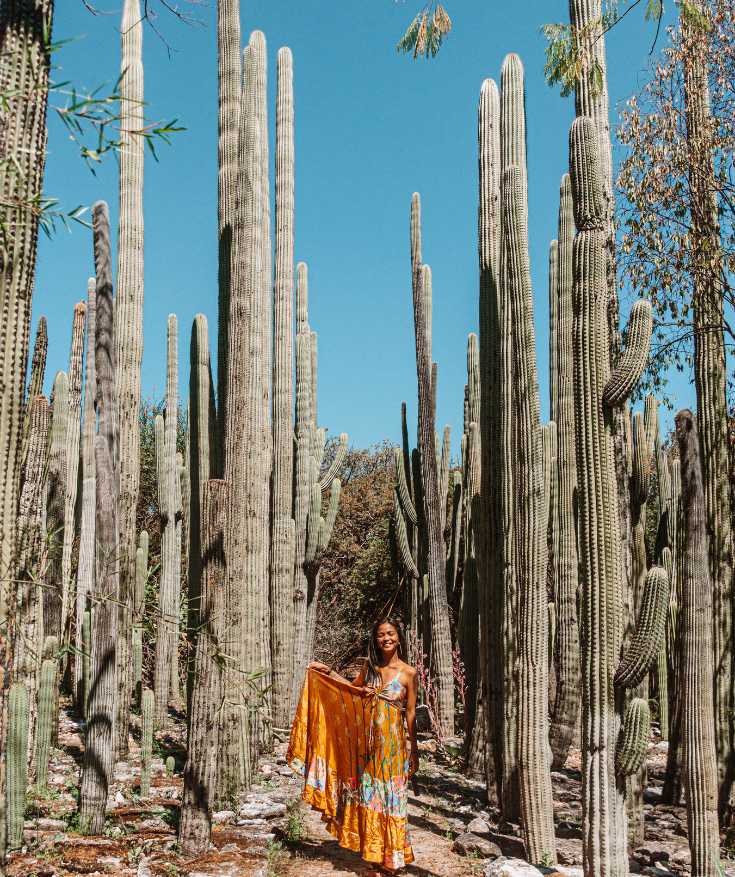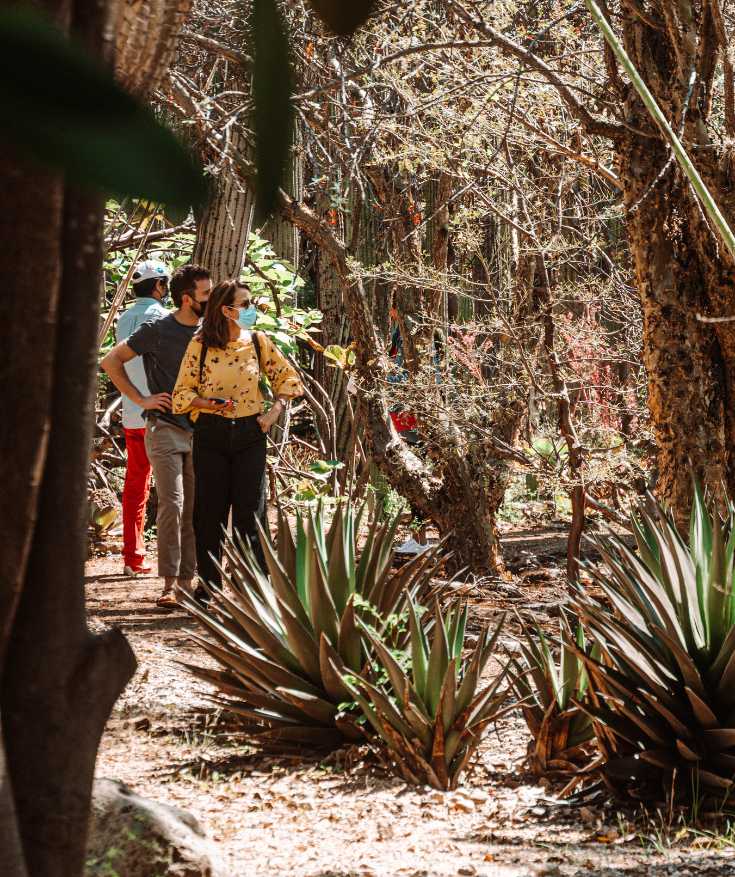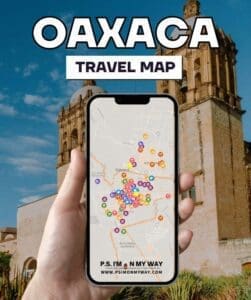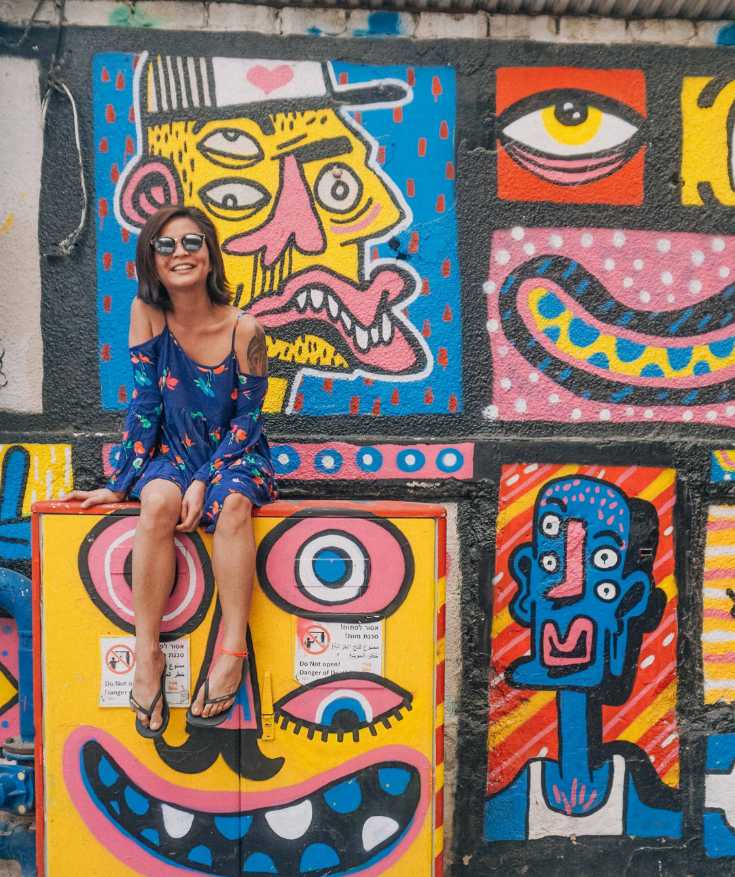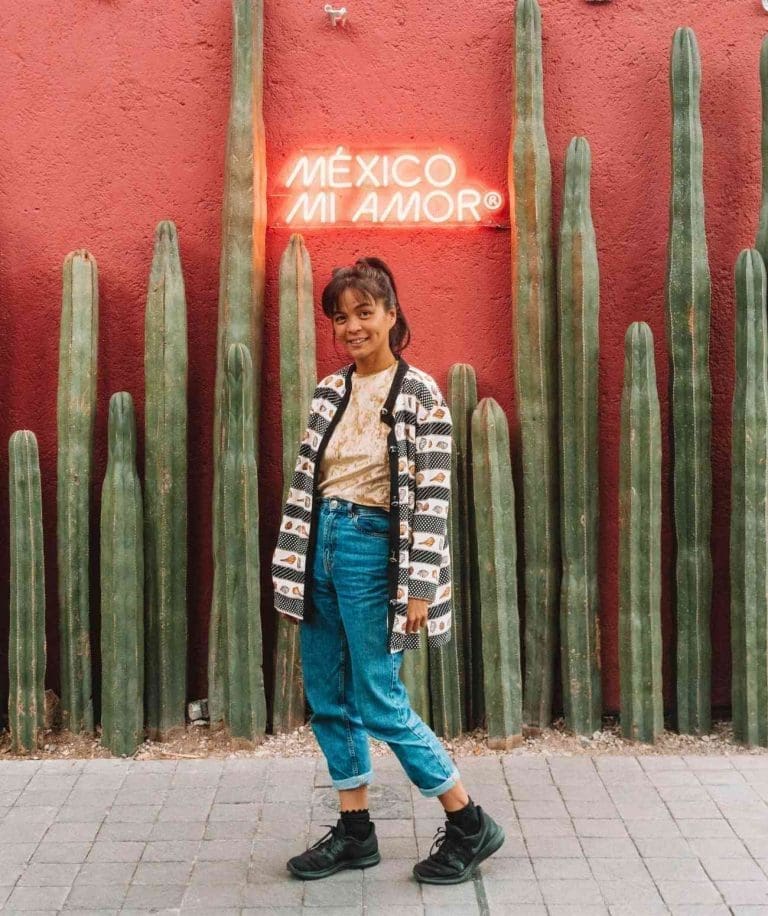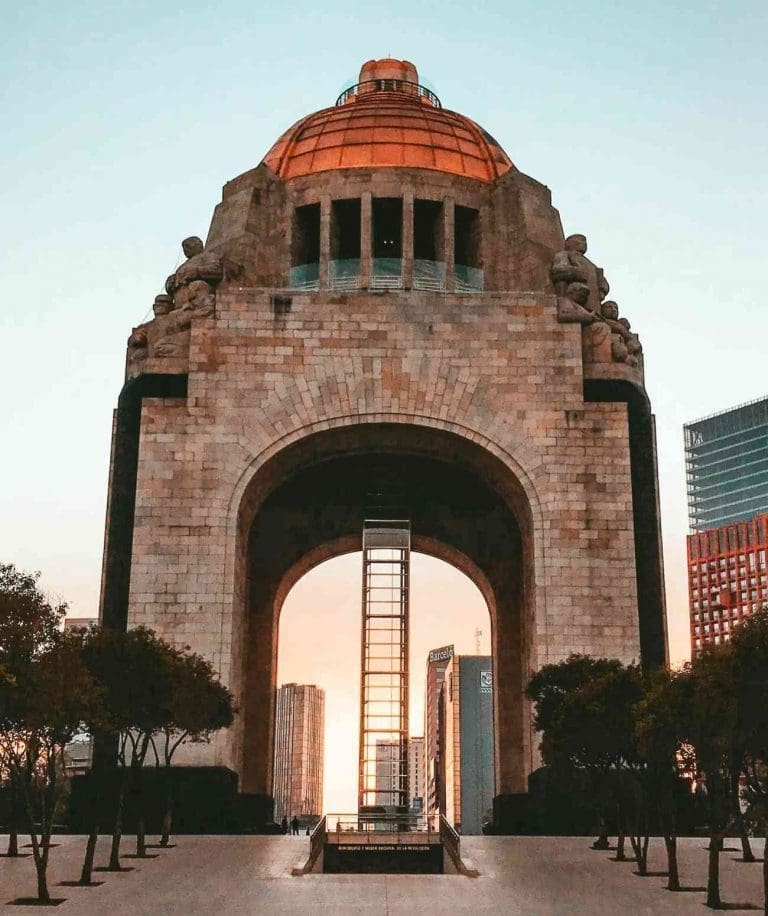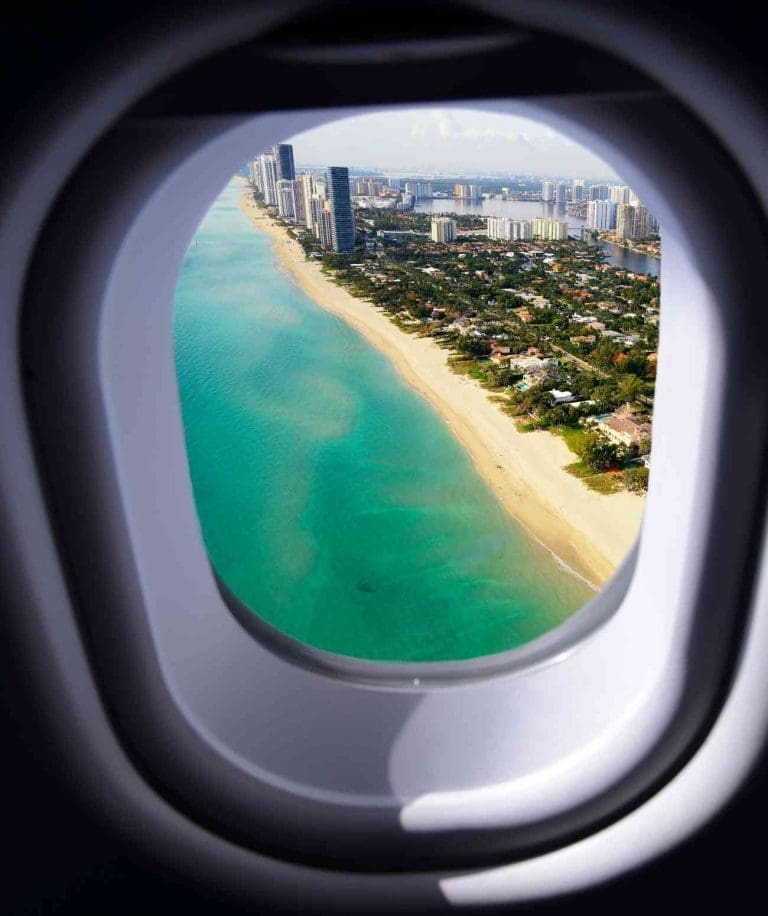3-5 days Oaxaca itinerary: guide, budget, and local tips
There are so many things to do in this city so it’s hard to decide what to include and leave out in your Oaxaca itinerary. I visit every year and this my recommendation.
Nestled in the southern part of Mexico, Oaxaca is a captivating destination renowned for its rich culture, vibrant arts scene, and delectable cuisine.
The city, a UNESCO World Heritage Site, effortlessly blends ancient history with contemporary allure, with its colonial architecture, bustling markets, and artisan workshops.
When planning a trip to Oaxaca, an itinerary that balances the city’s highlights and the surrounding towns are the best factors to consider.
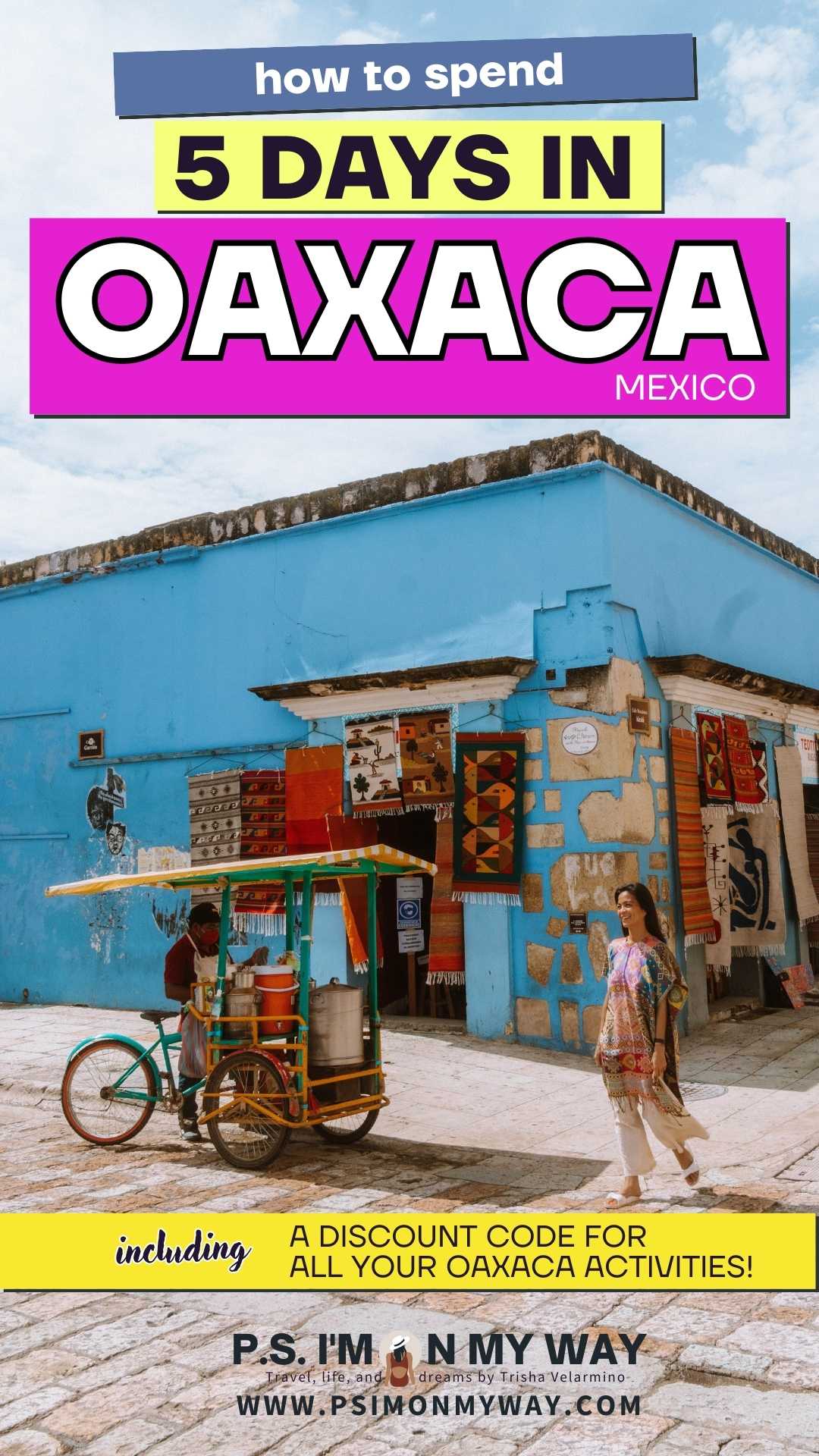
As you craft your Oaxaca itinerary, consider the city’s history, culture, gastronomy, and natural wonders as key aspects to explore.
Also don’t forget to explore the Oaxacan cuisine as it is one of the highlights of visiting Oaxaca. This city is very well-known for its world-class gastronomy!
Don’t forget to include excursions to the surrounding areas for a broader perspective of Oaxaca’s region. Here’s my Oaxaca itinerary that I improve every year.
There really is so much to discover and I don’t get sick of this city! If you plan to visit in October, feel free to join my day of the dead tour!
Change how you travel and see the world by going deep into the culture. Come and travel with me!
🛬 Arrival in Oaxaca City
Note that all flights to Oaxaca City stop in Mexico City. The flights are pretty frequent with arrivals from 9:00 AM to 7:00 PM. The flight duration from Mexico City is 1 hour and 13 minutes.
Alternatively, you can also take a bus from Mexico City which is more affordable but takes 6 hours. ADO is the Mexican bus company that operates this route and has trips every hour.
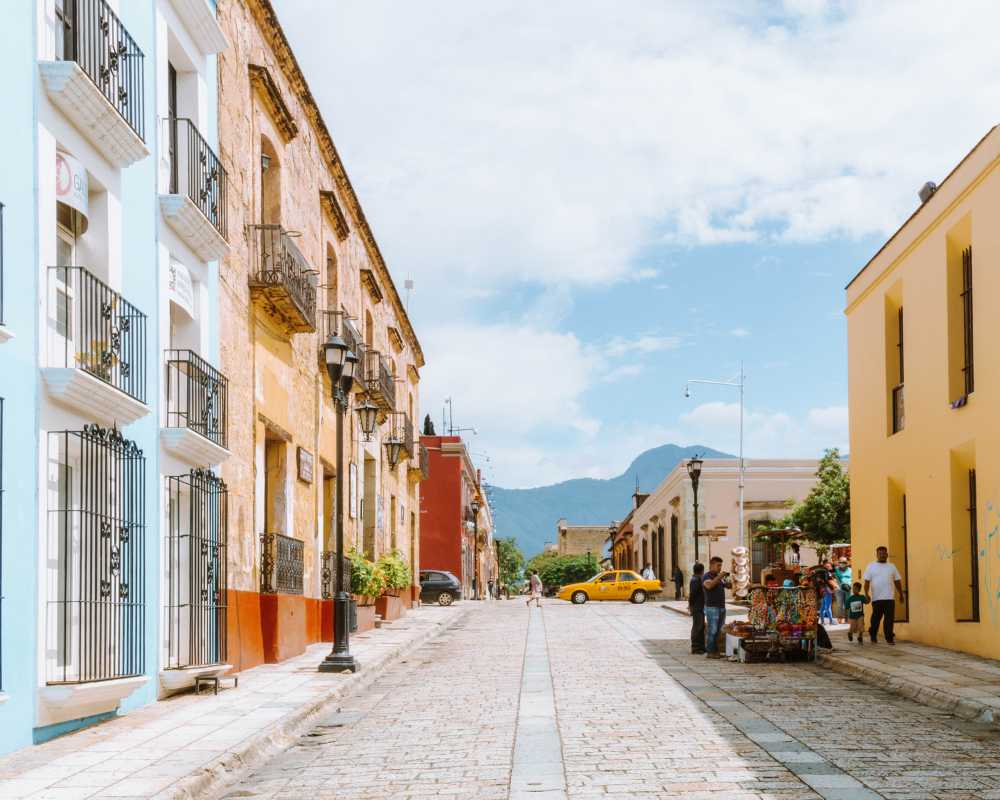

Check-in time in Oaxaca is 3:00 PM so if you arrive before this, you can always leave your suitcase at your hotel for storage. You may also request for an early check-in but it comes with an additional fee.
🚕 Oaxaca City International Airport (OAX) is about 20-30 minutes away from the center. Uber is not allowed in the airport so you need to book a taxi service in advance. [Book Oaxaca Airport Transfer]
Tip: While waiting for check-in, you can go for lunch at Vaca Marina, a restaurant that has a view of the Santo Domingo Church. This will give you a great welcome and intro about the city of Oaxaca.
🌟 Oaxaca itinerary day 1: City highlights
Andador Turistico
The Andador Turístico is a vibrant pedestrian-only street in Oaxaca City, Mexico, known for its lively atmosphere. This popular boulevard, stretching from Santo Domingo Church to the Zócalo, is lined with shops, galleries, restaurants, and bars.
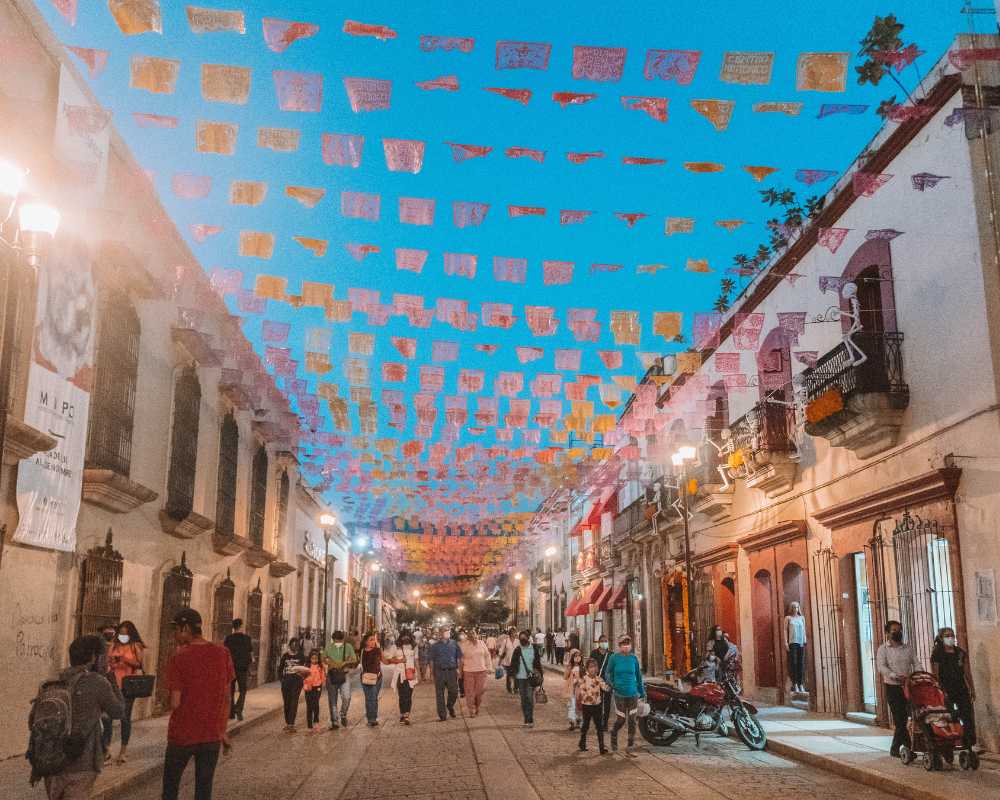

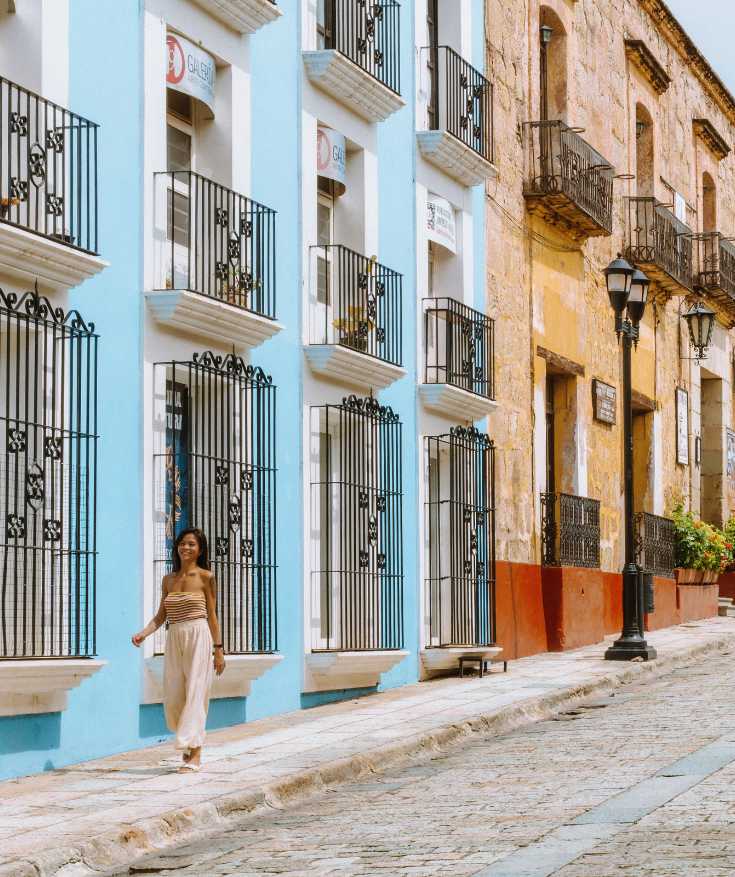



The Andador Turístico is a perfect spot for a leisurely stroll, offering glimpses of Oaxaca’s history, arts, crafts, and gastronomy, making it a must-visit destination in this UNESCO World Heritage city.
🍲 Alternatively, you can have lunch at Los Danzantes, a must-visit high-end restaurant in Oaxaca City. It is in the Andador Turistico.
Oaxaca’s Zocalo
Oaxaca’s Zócalo, the city’s central square, is a vibrant social hub steeped in history. Surrounded by colonial buildings, including the iconic Oaxaca Cathedral, the square pulses with life, hosting street vendors, musicians, and traditional dancers.
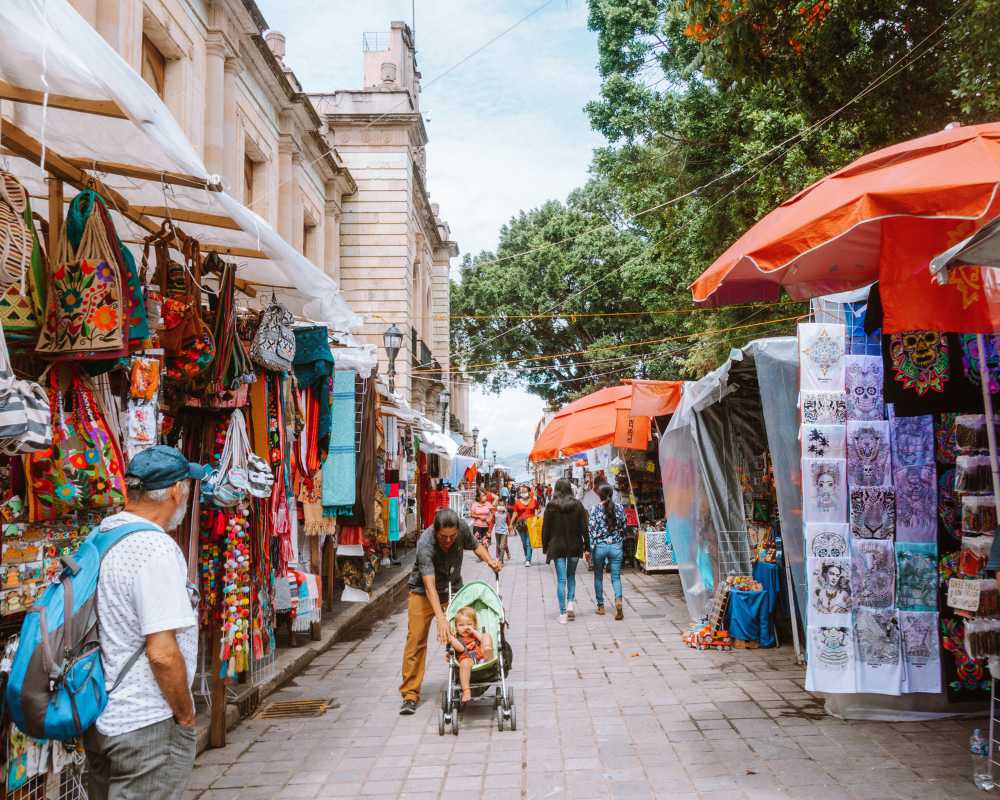

Shaded by large trees, you can try local foods from nearby cafes and just people-watch. The Zócalo regularly hosts events, markets, and political gatherings.
☕ Del Jardín Cafeteria has tables and chairs outside with front-row seats to the Zocalo’s view. This is a great Mexican breakfast place (under $10 USD).
Santo Domingo Church
The Santo Domingo de Guzmán Church is a landmark of Oaxaca City, showcasing exquisite Spanish Baroque architecture. Its ornate interior is adorned with intricate gold leaf work and religious iconography.


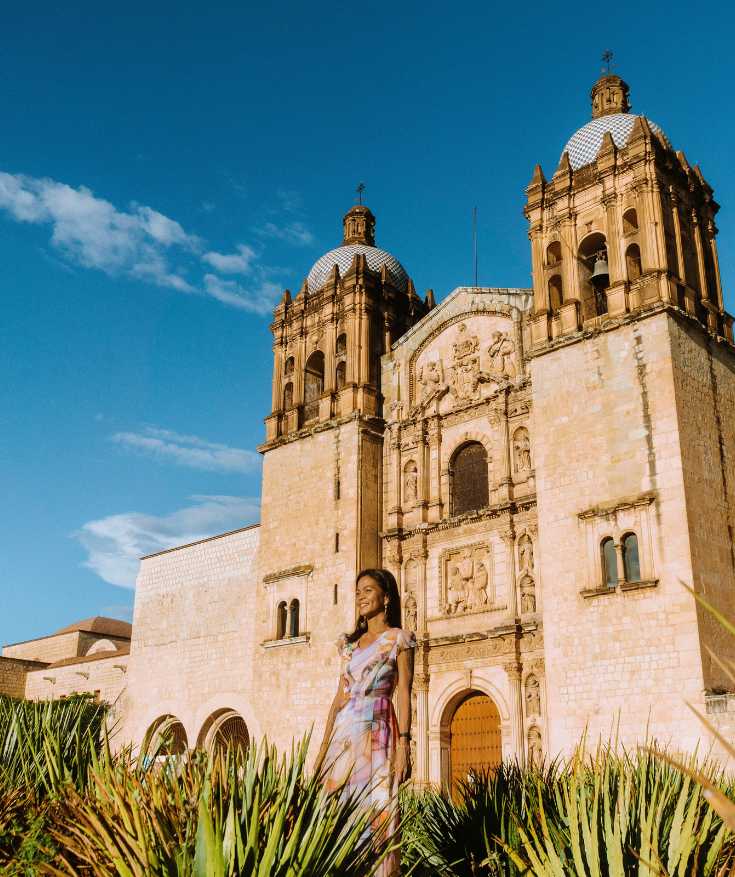

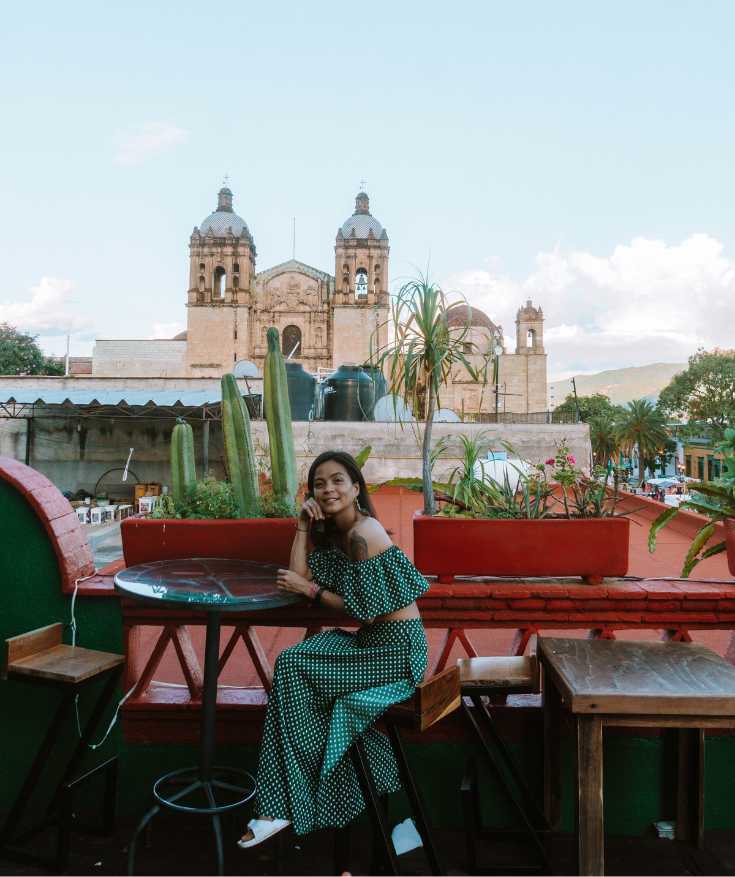

Built over a span of 200 years, the church tells a rich historical story. Adjacent to the church is the former monastery, now housing the Museum of Oaxacan Cultures, exhibiting regional history and art.
The church’s plaza is a social gathering point, hosting markets and performances. Its botanical garden features plants endemic to Oaxaca.
Ethnobotanical Garden
Oaxaca’s Ethnobotanical Garden is a testament to Mexico’s diverse flora and the indigenous peoples’ deep connection to nature.
Located within the Santo Domingo Cultural Center, the garden showcases the unique plants of Oaxaca’s varied ecosystems, ranging from arid cacti to lush tropical species.
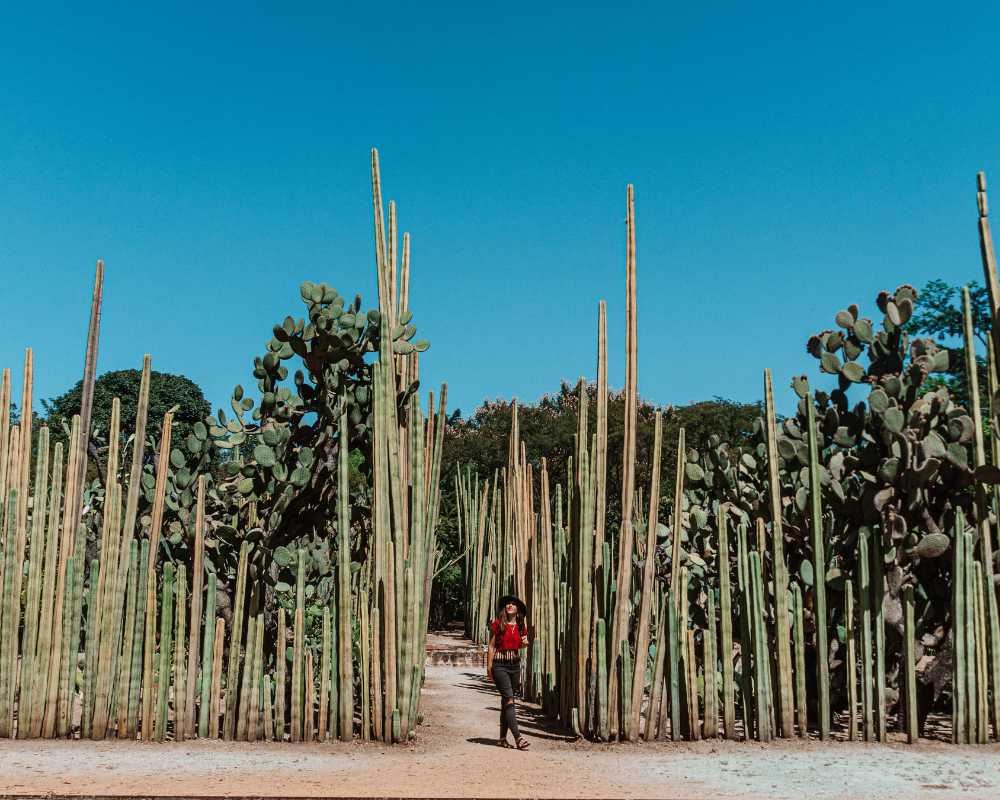

🎟️ Tickets and hours: Open from 10:00 AM – 3:30 PM. Tickets at 100 pesos ($6 USD). The tour can be booked for different languages (English, French, Spanish, German, etc.). They are not accepting reservations so you need to fall in line early. This is a guided tour and can’t be done on your own.
Tip: To make sure you get in the garden, fall in line around 8:00 AM. There are many cafes and bakeries on the street where the garden where you can get breakfast.
Museums of Oaxaca City
Oaxaca City’s museums are treasure troves of culture and history. The Museum of Oaxacan Cultures, housed in the former Santo Domingo monastery, showcases regional artifacts.
The Rufino Tamayo Museum of Pre-Hispanic Art exhibits a diverse collection of indigenous art. The Contemporary Art Museum (MACO) highlights modern pieces.
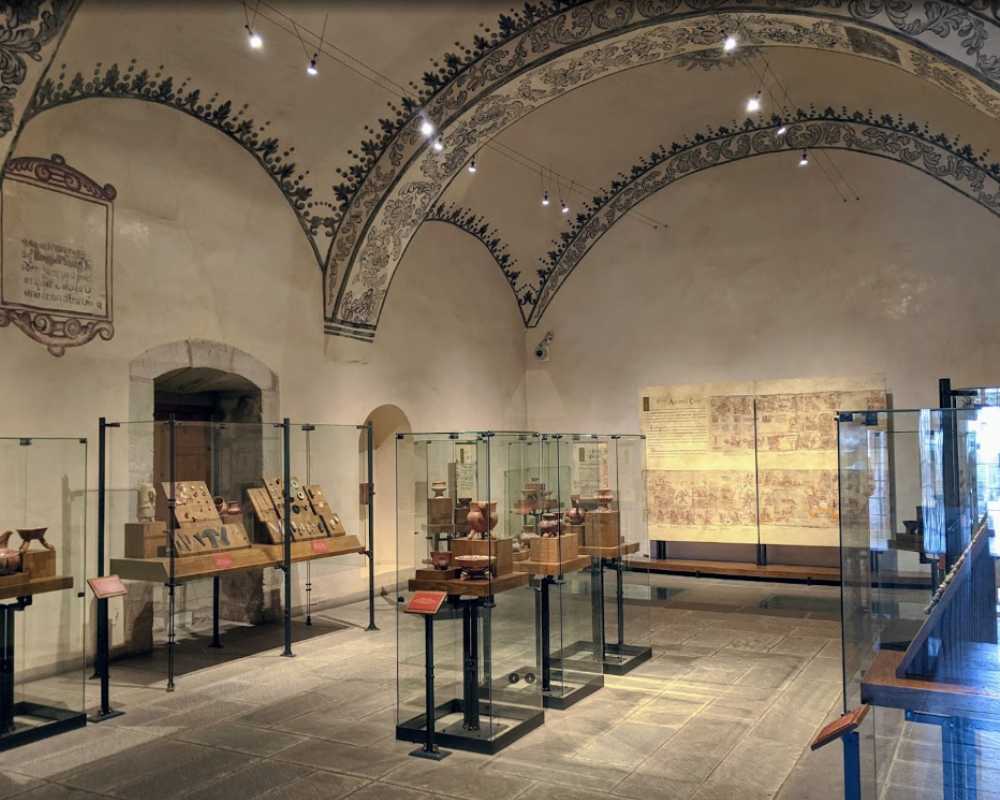

The Textile Museum showcases Oaxaca’s rich weaving traditions. These museums collectively narrate Oaxaca’s captivating story.
🎟️ Tickets and hours: Most museums in Oaxaca are FREE and don’t require a reservation. They usually close by 4:00 PM.
Jalatlaco
Jalatlaco and Xochimilco are two of Oaxaca City’s most picturesque neighborhoods, each with a unique perspective of the city’s rich history and vibrant culture.
Jalatlaco is one of the oldest districts in Oaxaca City. Its cobblestone streets, colorful colonial-era houses, and relaxed atmosphere make it feel like a village within the city.
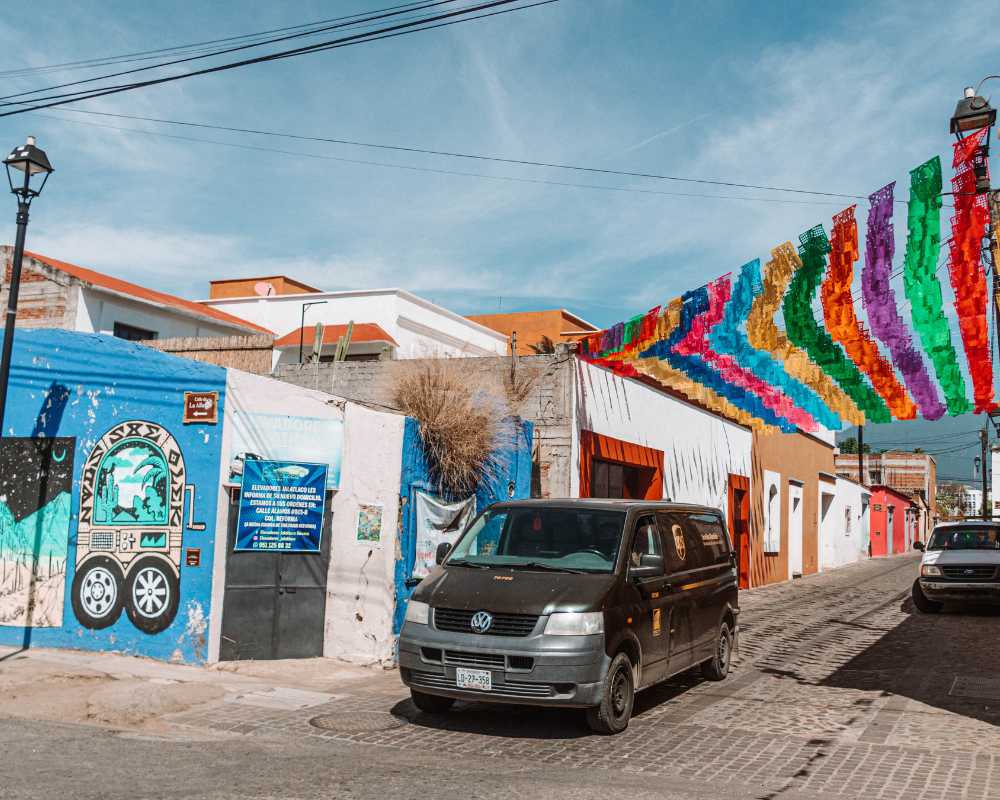

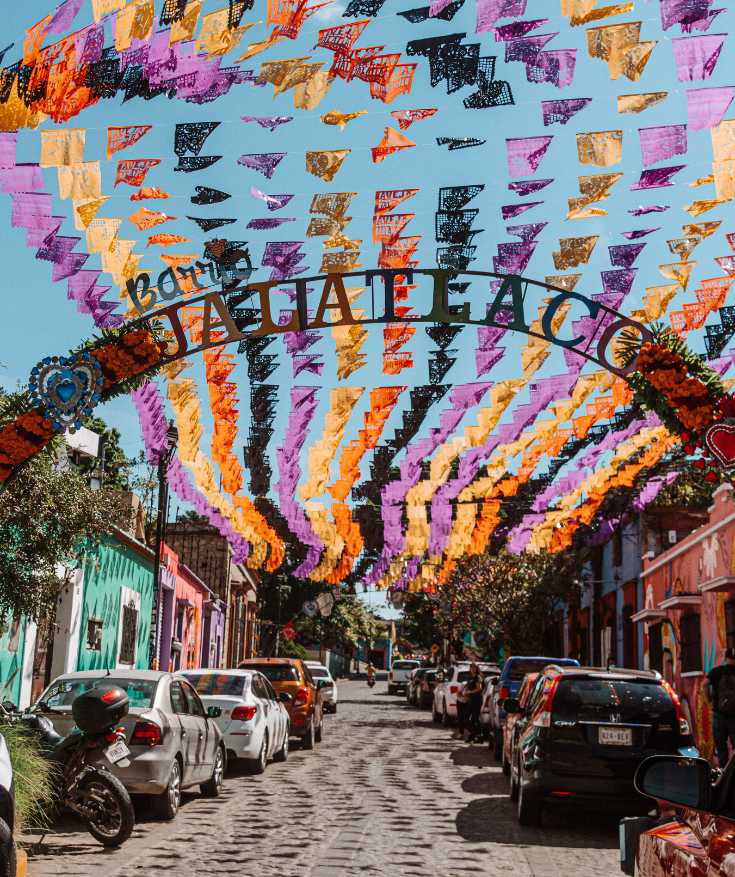



Once a stagecoach stop, Jalatlaco retains a charming old-world ambiance, hosting small boutiques, cafes, and local artisan studios. At its heart, the Jalatlaco Church boasts a beautiful painted wood ceiling, making it a quiet sanctuary worth visiting.
Tip: Jalatlaco is a great area to visit for both day and night. This neighborhood is so lively at night with street parties and music so if you liked it during the day, you’ll love it at night, too!
Xochimilco
Just north of the city center, Xochimilco is named after the famous floating gardens of Mexico City due to its canals in the pre-Hispanic era.
Today, it’s an artsy neighborhood known for its restored colonial mansions and tranquil pedestrian street, lined with eclectic shops, galleries, and restaurants.
The neighborhood comes alive on Fridays and Saturdays with the Organic Market, where you can explore a range of local produce, crafts, and culinary delights.
Tip: Eat at Ancestral in Xochimilco, a restaurant that is focusing on ancient-style Oaxacan cooking. It is a small place so it may be difficult to get a reservation but this is highly recommended to those who are interested in food adventures.
🥾 Oaxaca itinerary day 2: Hierve El Agua
The visit to Hierve El Agua is already 8-12 hours so this will cover most of your day 3 Oaxaca itinerary. Hierve el Agua is about 3 hours away from Oaxaca City and MUST be on your list.
Formed by mineral-rich water trickling down the cliffside over thousands of years, these cascades offer stunning views over the surrounding valleys.
The name ‘Hierve el Agua’ means ‘boiling water’ in Spanish, a reference to the bubbling springs that feed the falls.
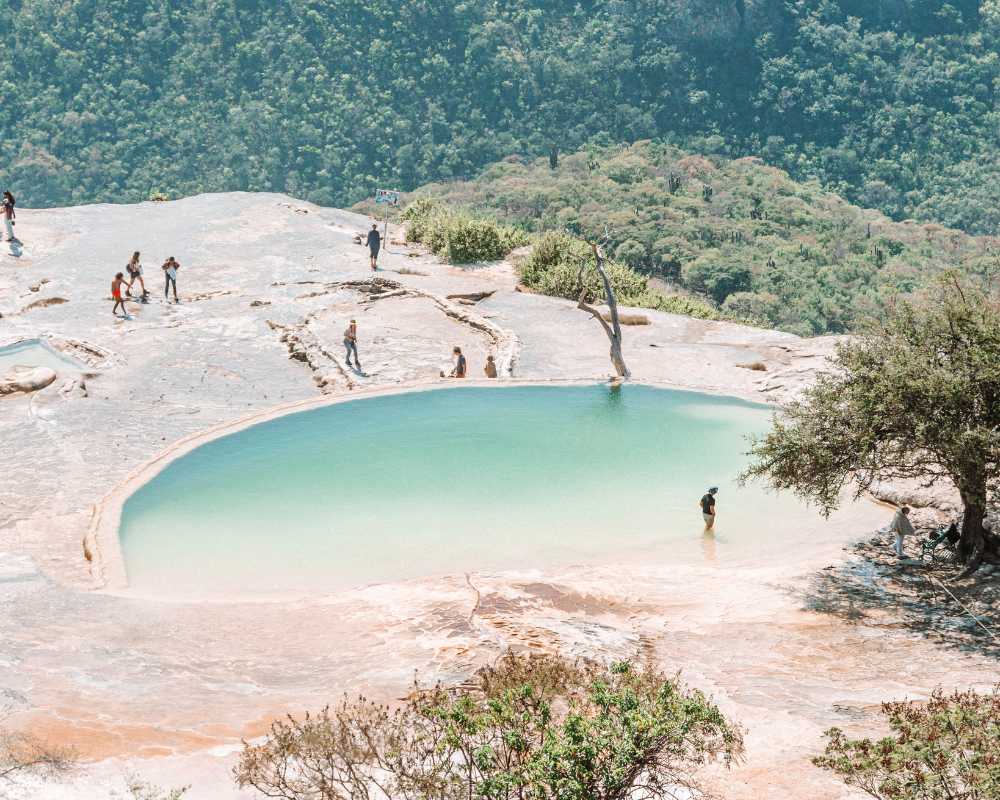

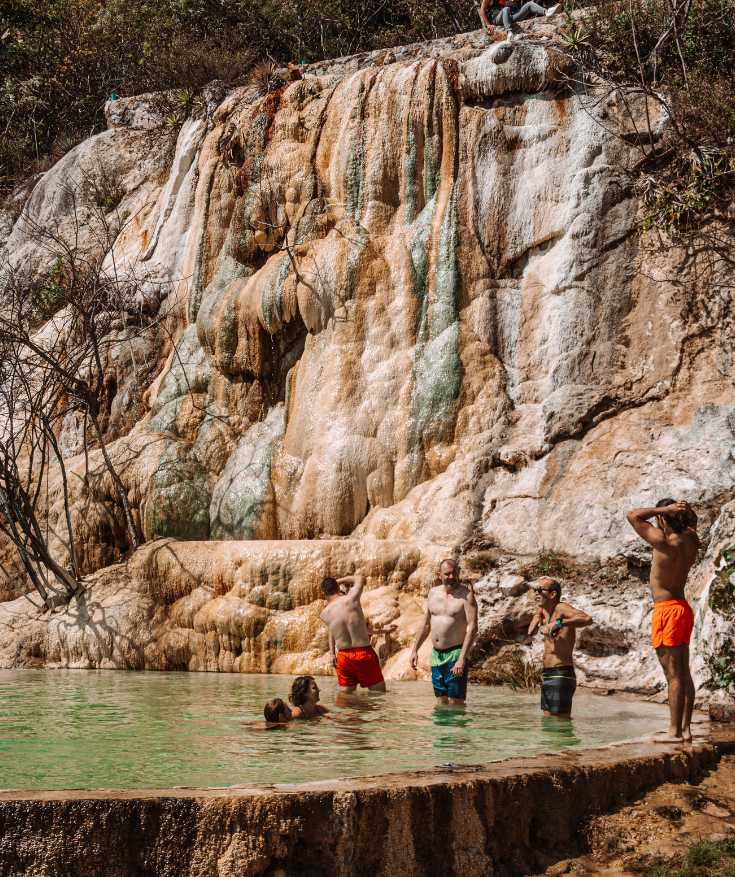

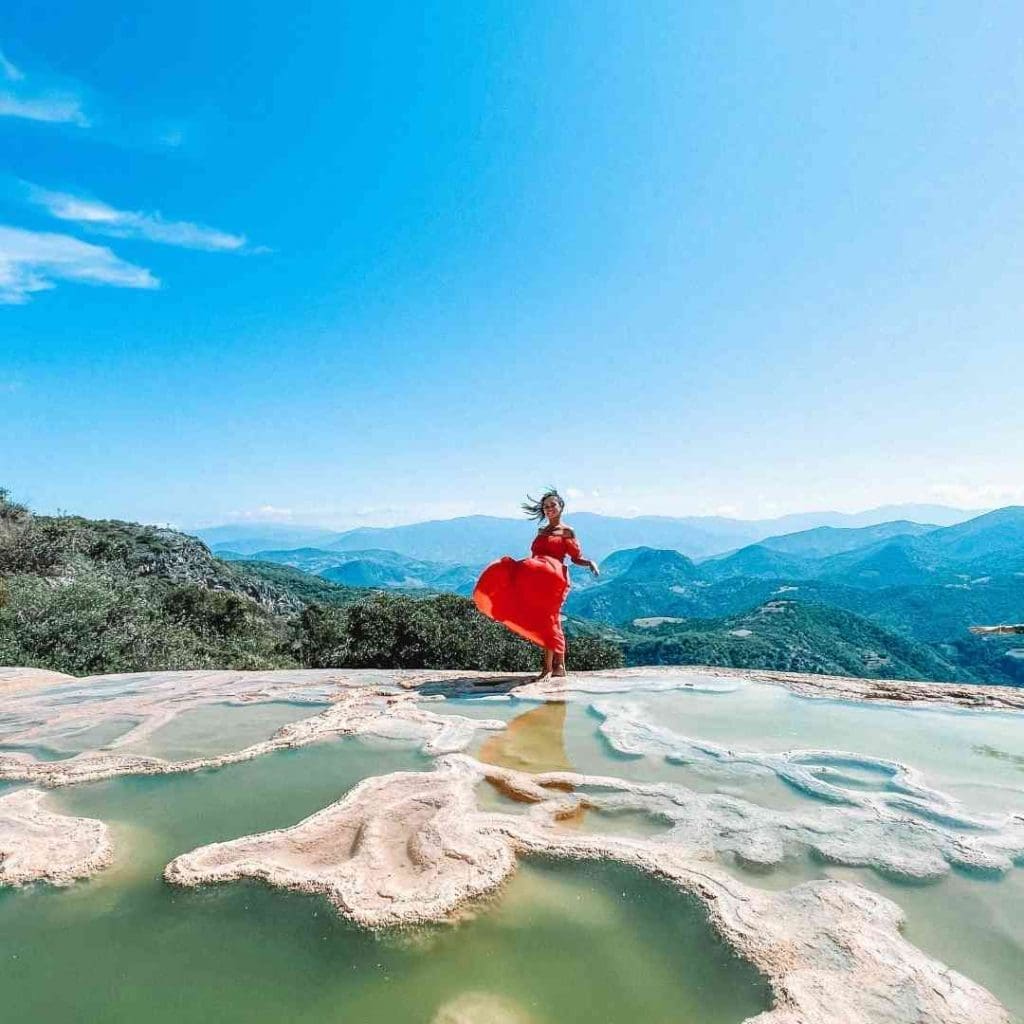

There are also natural pools atop the cliffs, where you can swim so make sure you bring swimming clothes, towels, and change of clothing.
Amidst breathtaking scenery, you can explore walking trails, local flora, and nearby traditional craft markets. This geological wonder is a must-see when visiting Oaxaca.
🧭 Tours and getting there: It is challenging to get to Hierve El Agua on your own so booking a private tour is recommended (from $140 USD). [Book Hierve El Agua Tour]
Tip: You may also combine your visit to Hierve El Agua to nearby sites like Mitla and the Tule Tree. Overall, the visit to all three sites will take 12 hours.
🥃 Oaxaca itinerary day 3: Mezcal tasting and agave farm visit
Mezcal is from Oaxaca so it would be strange not to have this in your Oaxaca itinerary. On day 3, go on a mezcal tour to get into the traditional processes behind this revered spirit.
You can go to local palenques (distilleries) to witness artisans crafting mezcal from harvesting agave to final distillation.
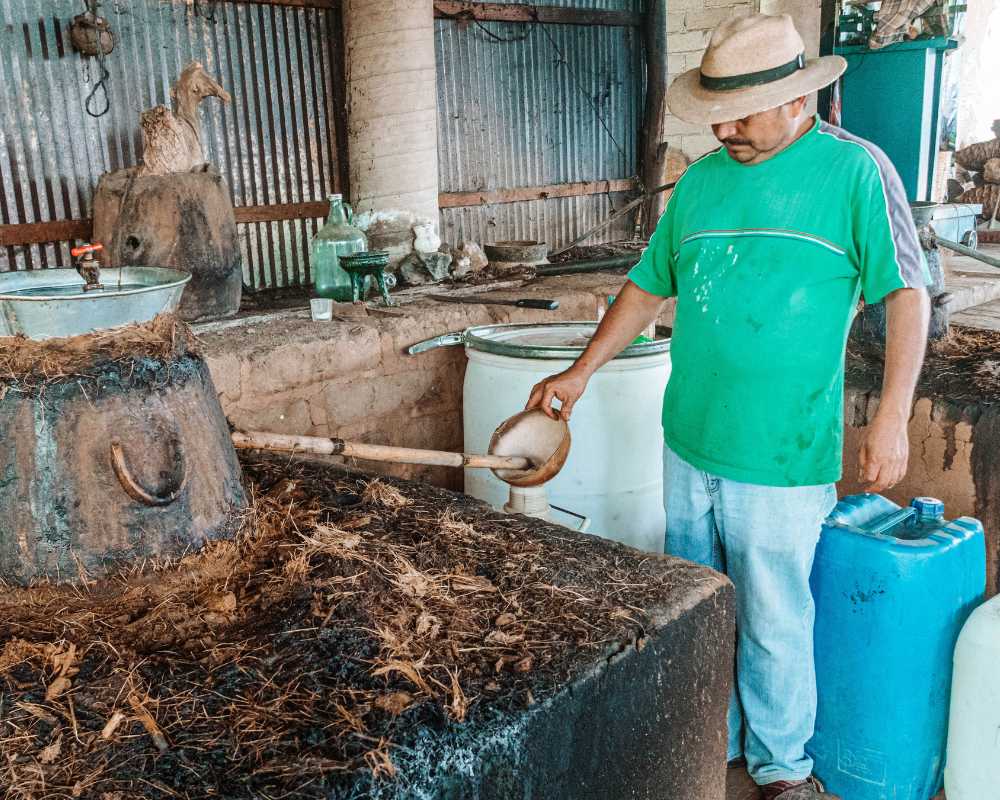



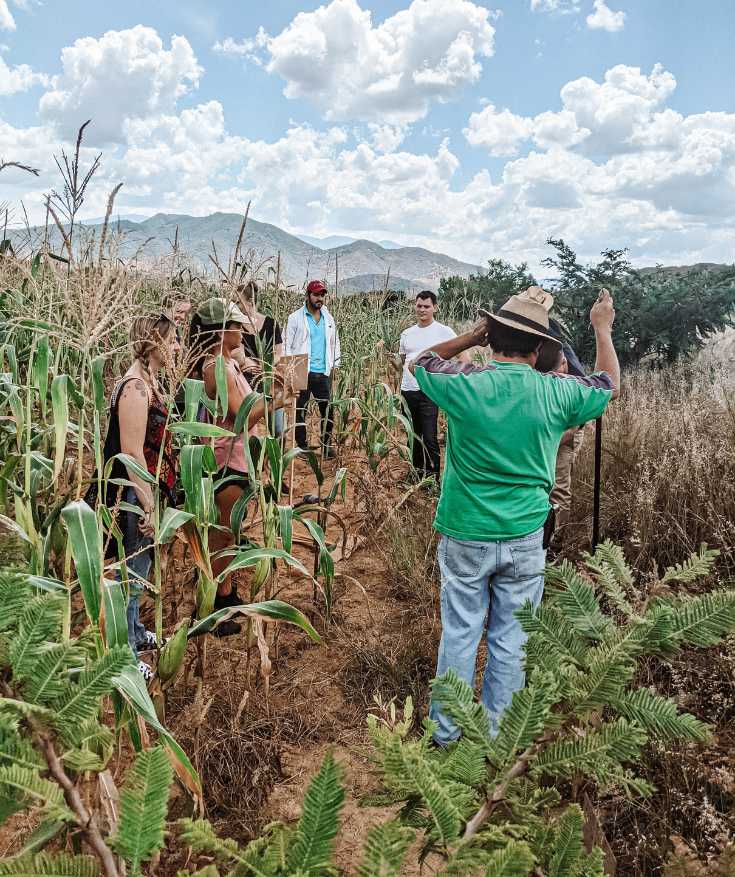

These mezcal tours are set in agave farms, just an hour away from Oaxaca City so this is not your usual tasting in a bar or restaurant.
These palenques are family-run and are small producers so you’ll be supporting the local community of mezcaleros if you opt for this kind of tasting.
🧭 Tours and getting there: You have to book a tour to get to a palenque. I recommend this local family who will also cook you lunch in their home in between the tour! The tour starts at $129 USD. [Book Mezcal Tour]
Tip: Want mezcal bottles to take home? Palenques sell them cheaper! Just make sure to bring cash as credit cards are not accepted in these areas.
🏺 Oaxaca itinerary day 4: Monte Alban and Oaxaca’s small towns
Monte Alban Archaeological Site
Monte Albán, a UNESCO World Heritage Site is one of Mesoamerica’s oldest and most significant archaeological sites. Established by the Zapotec civilization around 500 BC, it thrived as a political and economic center for over a thousand years.
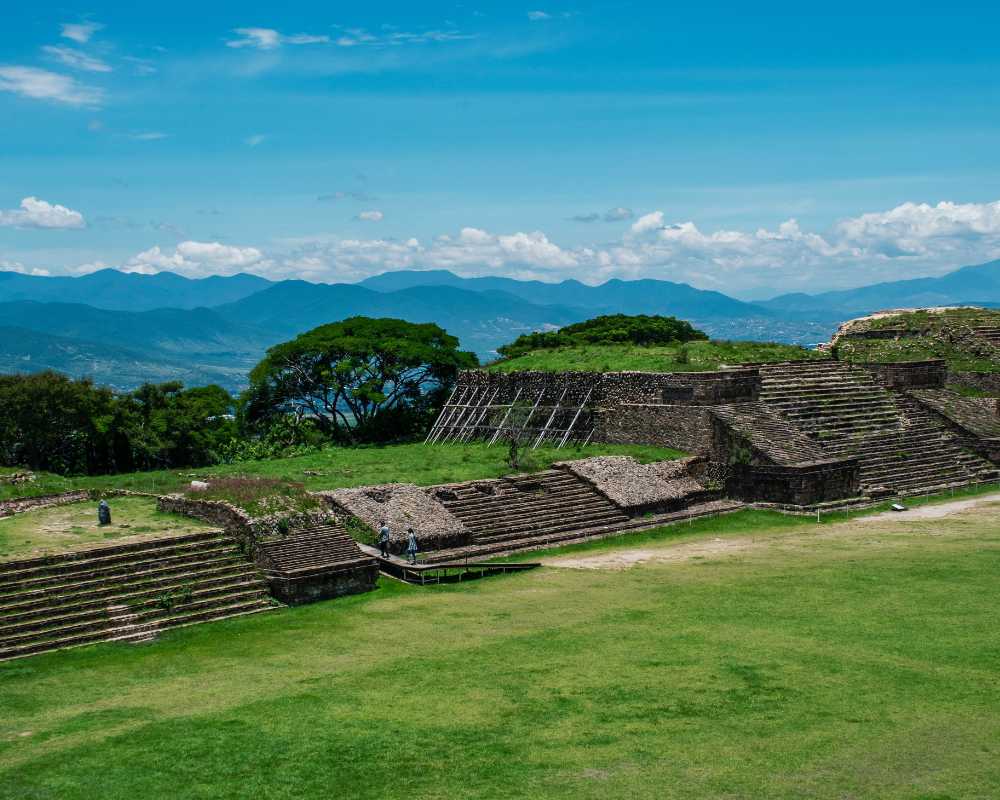

You can explore its grand plazas, intricate tombs, and monumental structures, including the impressive Ball Court and Observatory. The site’s hilltop location offers panoramic views of the surrounding valleys.
Monte Albán’s on-site museum enriches the experience with artifacts and context. The visit to Monte Alban only takes 4 hours max so you can still combine it with other activities.
🧭 Tours and getting there: A tour to Monte Alban only takes half-day and the tours are around $85 USD per person. [Book Monte Alban Tour]
Alebrijes Workshop
Alebrijes are fantastical, vibrantly painted wooden creatures, a folk art tradition originating from Oaxaca.
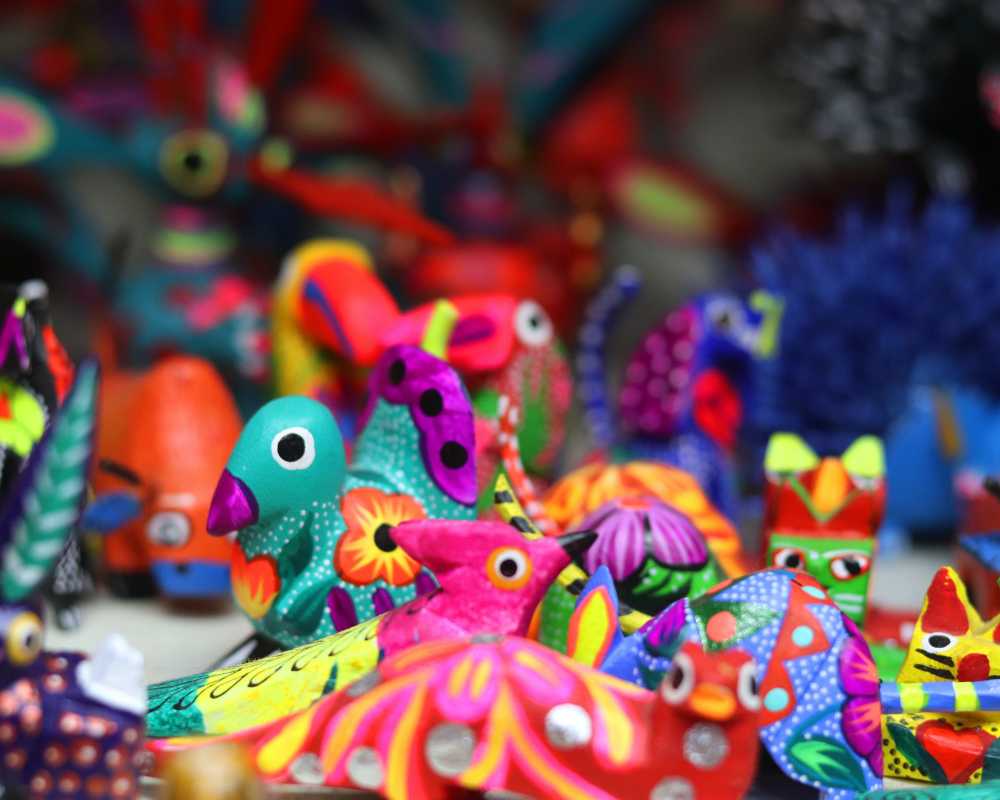

Under the guidance of local artisans, you can learn the intricate processes of carving and painting your own alebrijes. Carvers demonstrate how they transform copal wood into whimsical figures, while painters reveal techniques for their elaborate designs.
The creative environment is a great authentic cultural exchange with the local community and a deeper appreciation for Oaxacan craftsmanship. You will also get to take home the alebrije that you painted!
🧭 Tours and getting there: This is also a short activity (2-3 hours) and starts at $85 USD per person. This can be easily combined with the Monte Alban tour for a package price. [Book Alebrijes Workshop]
Black pottery in Coyotopec
San Bartolo Coyotepec in Oaxaca is globally recognized for its black pottery, or barro negro, a centuries-old Zapotec tradition. This pottery is unique for its color, sheen, and intricate designs.


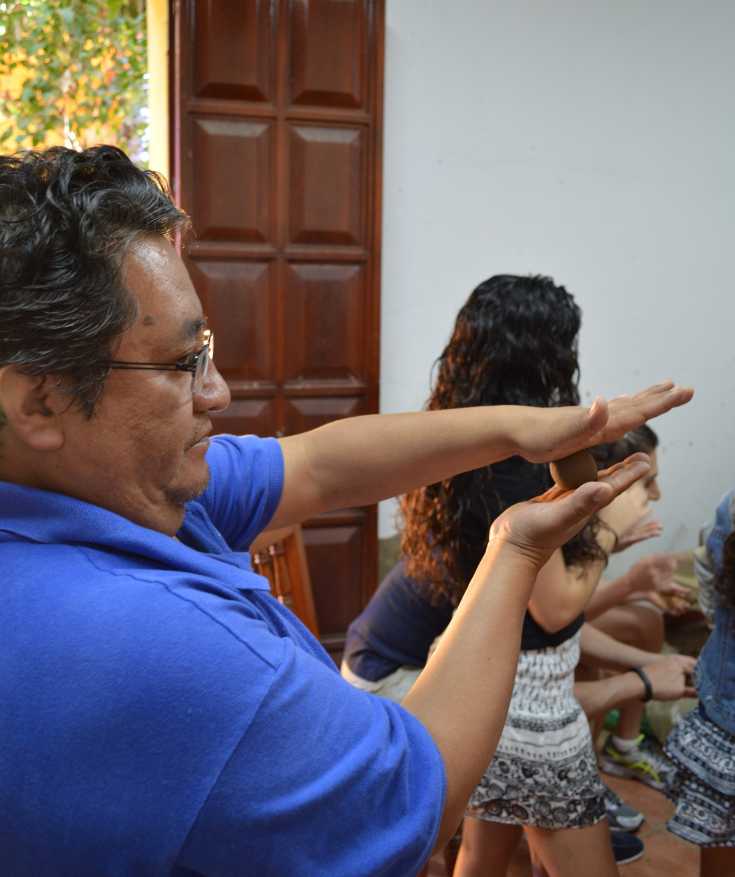

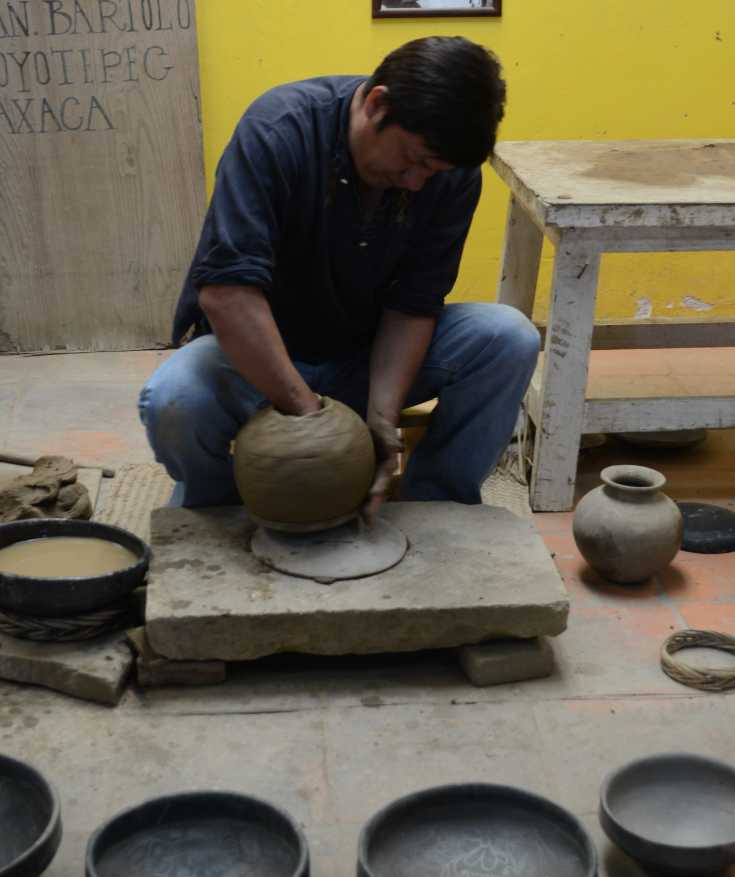

The process involves local clay, which naturally turns black during firing in a sealed kiln. Artisans shape pieces by hand or on foot-powered wheels, often etching intricate patterns before firing.
You can participate in a workshop or explore local studios offers a rich insight into this elegant Oaxacan craft.
🧭 Tours and getting there: This is also a short activity and can be combined with a visit to Tule and Mitla. [Book Pottery and Town Visit]
🥻 Oaxaca itinerary day 5: Oaxacan textile
Teotitlán del Valle is renowned for its vibrant, handwoven textiles, a Zapotec tradition spanning centuries. These textiles, typically rugs or tapestries, feature intricate designs woven on traditional pedal looms.
Artisans use natural dyes derived from plants, insects, and minerals to create a spectrum of rich colors. Patterns often depict local flora, fauna, and Zapotec motifs, each carrying symbolic meanings.
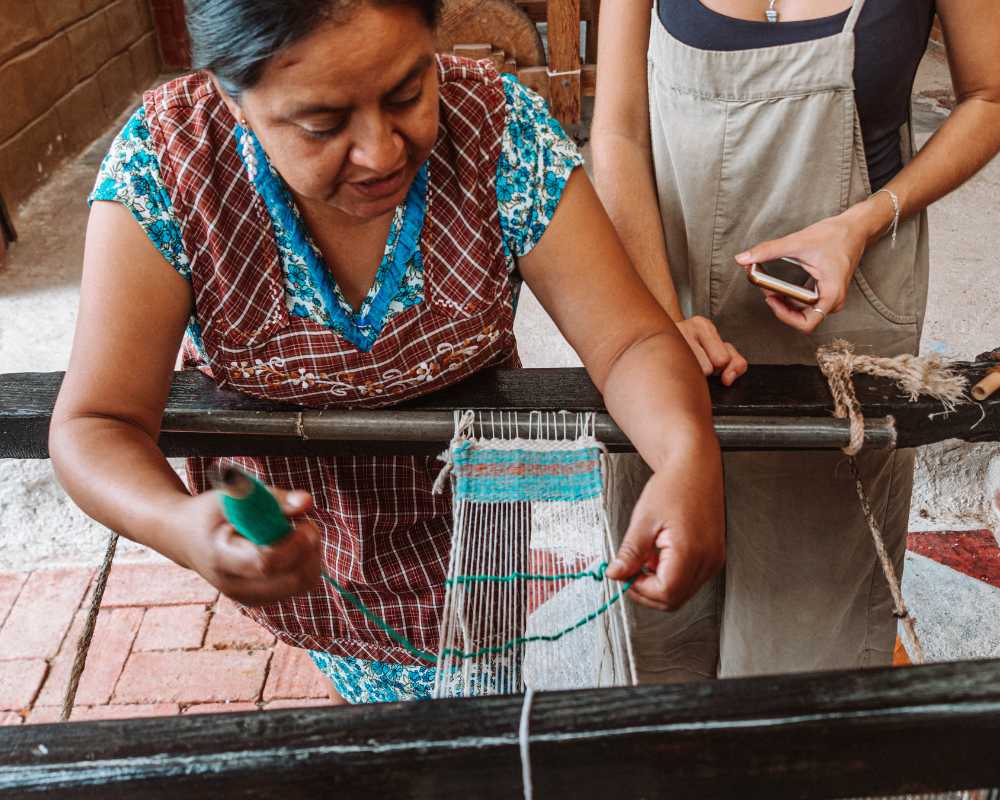



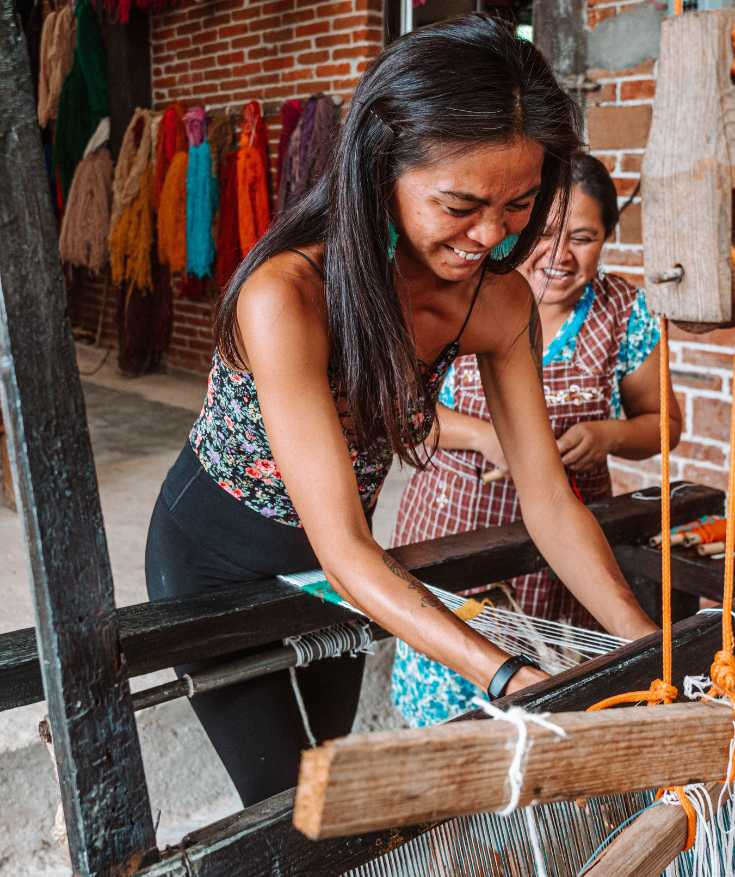

You can visit a family-run workshops, do the weaving process firsthand, and try the loom! The local families will also serve lunch at their homes.
🧭 Tours and getting there: This activity takes 4-6 hours and starts at $125 USD. You need to book a tour to visit the families. [Book Textile Tour]
Last day: Oaxacan markets and shopping
Oaxaca City’s markets are bustling hubs of commerce and culture. Mercado Benito Juárez offers a variety of goods, from food and clothing to handicrafts. Here, you can sample local cuisine, like tlayudas and chapulines.


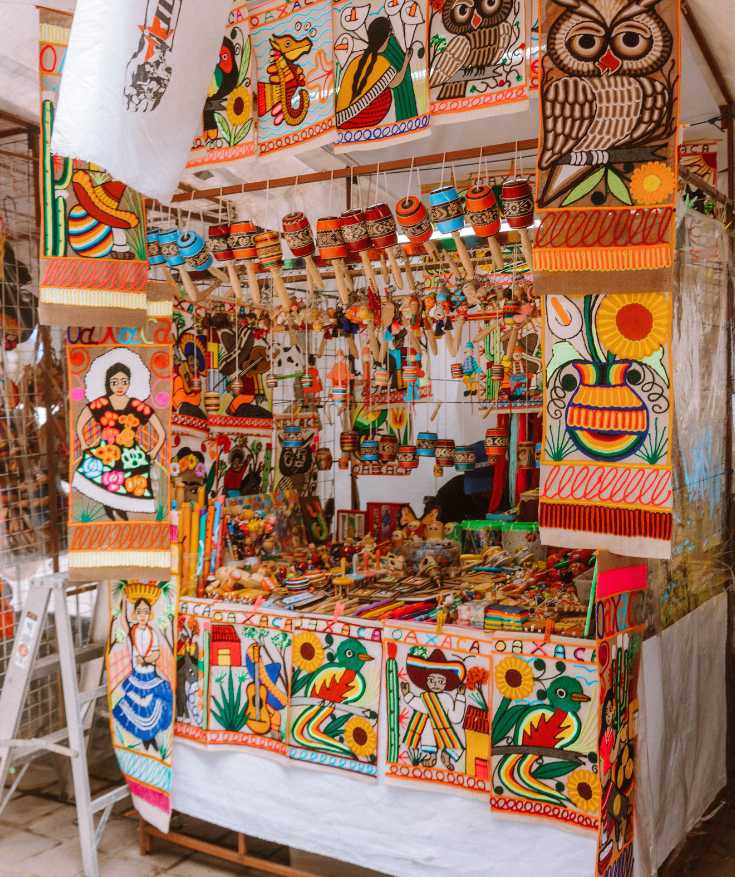

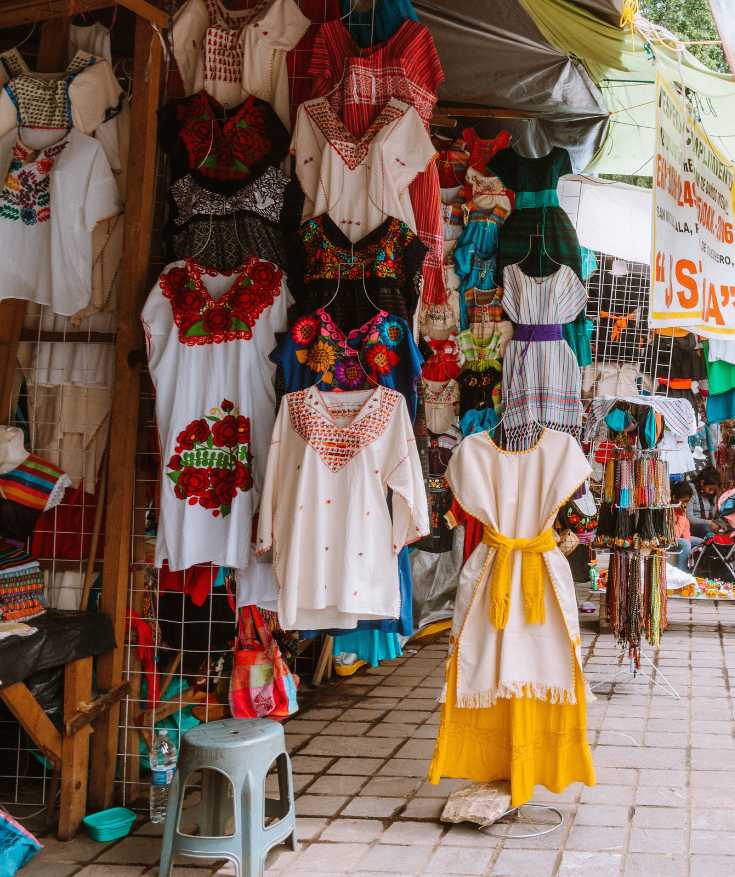

Mercado 20 de Noviembre, known for its food stalls, is a gastronomic delight, where you can enjoy a hot chocolate or a custom-made mole sauce.
Mercado de Artesanías is a craft lover’s paradise, brimming with textiles, pottery, and alebrijes. These vibrant markets not only provide a feast for the senses but also offer a rich insight into Oaxaca’s traditions, regional products, and daily life.
🛫 Departure from Oaxaca City
To maximize your Oaxaca itinerary, take the last night flight out to Mexico City (around 7:00 PM) or the night bus at 10:00 PM.


